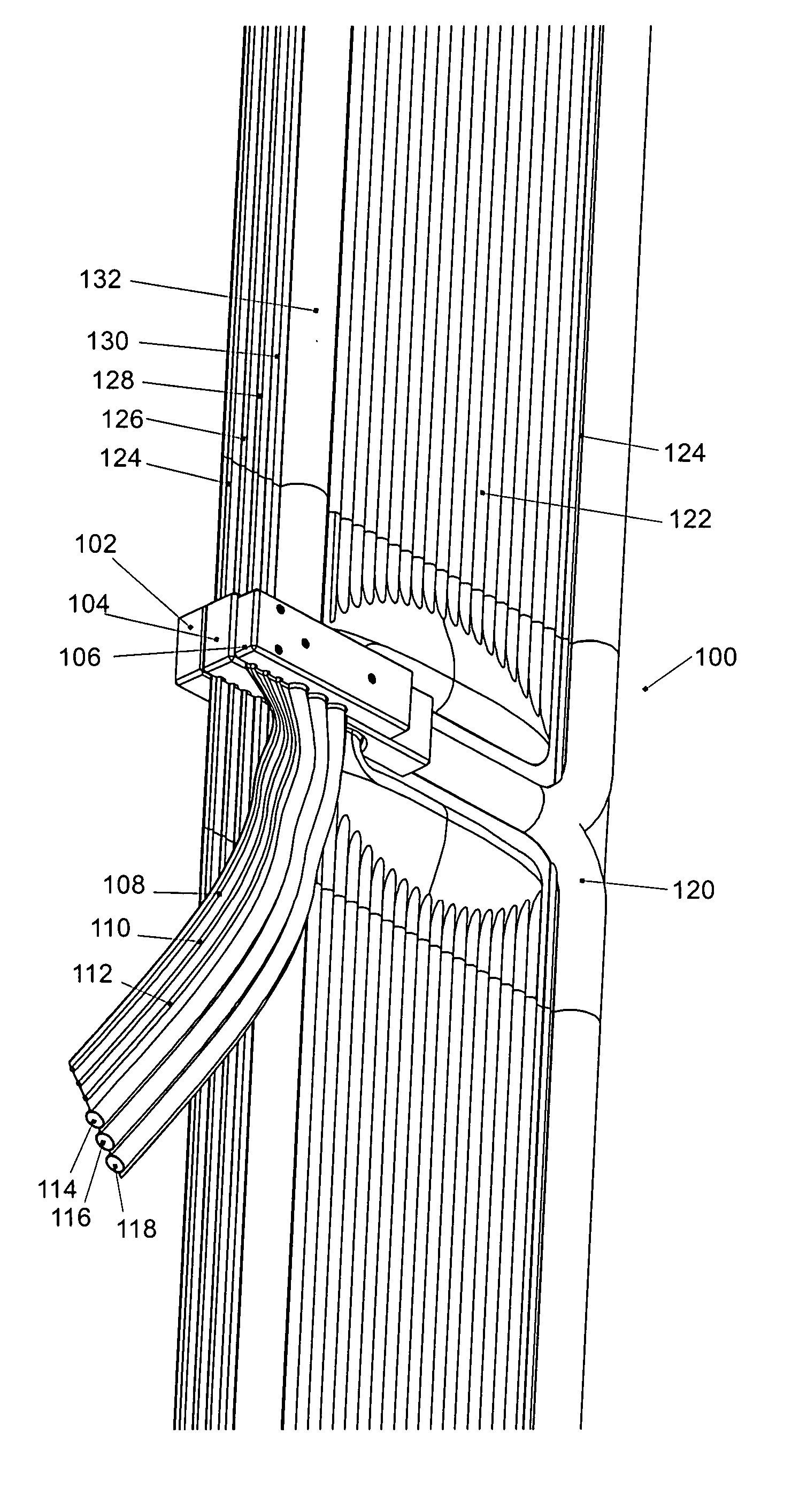Low-cost interconnection system for solar energy modules and ancillary equipment
- Summary
- Abstract
- Description
- Claims
- Application Information
AI Technical Summary
Benefits of technology
Problems solved by technology
Method used
Image
Examples
embodiment 302
[0073] Under the combined influence of internal pressure, mechanical rigidity of the native film material or rigidity of inserted or incorporated materials, the regions indicated by white in FIG. 3AB form at least one conduit. In the embodiment 302 of the invention depicted in FIGS. 3A-BA, the conduit 318 contains a mechanical cable, e.g., a wire rope used to reinforce and support the multi-element cable; 320 and 322 hold electrical wires; 324 contains wires for networking and electronic sensing, signaling, and control; 326 forms a cavity for conveying cooling water; 328 are multiple cavities for conveying hot water from the concentrators; 330 holds a secondary mechanical cable; and 332 is a cavity for conveying inflation air. The cavities 328 are arranged to increase surface area to enhance heat transfer. The ordering size, presence and absence of these conduits or the presence of additional conduits of a different nature depends on the specifics of the application.
[0074] The order...
embodiment 500
[0102] FIGS. 5A-B shows an alternative embodiment 500 of the present invention in which the cable is manufactured to facilitate the use of more compact connectors at specific sites. Common manufacturing processes can support non-uniform channels, such as the plenum 510 that combines the parallel channels 508 and routes them to a single connector mate 512. An air conduit 506 is similarly routed to minimize the connector size. Because the location of a connector is prescribed by they features, a mechanical reinforcement lamination 504 can readily be incorporated at the time of manufacturing.
[0103] FIGS. 6A-B shows a connector installed or incorporated onto the cable in FIGS. 6A-B. This particular connector design is a “breakout” connector, in which the conduits of the cable are separately routed to a number of separate conventional conduits.
[0104]FIG. 7 shows an exploded view of such a breakout connector according to the present invention. In all cases, mechanical connections are sho...
PUM
 Login to View More
Login to View More Abstract
Description
Claims
Application Information
 Login to View More
Login to View More - R&D
- Intellectual Property
- Life Sciences
- Materials
- Tech Scout
- Unparalleled Data Quality
- Higher Quality Content
- 60% Fewer Hallucinations
Browse by: Latest US Patents, China's latest patents, Technical Efficacy Thesaurus, Application Domain, Technology Topic, Popular Technical Reports.
© 2025 PatSnap. All rights reserved.Legal|Privacy policy|Modern Slavery Act Transparency Statement|Sitemap|About US| Contact US: help@patsnap.com



